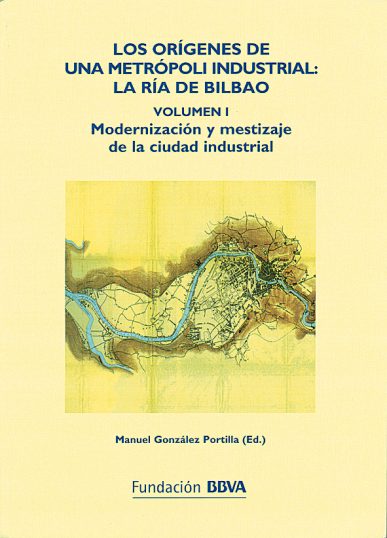
PublicationMonographs
Los orígenes de una metrópoli industrial. La ría de Bilbao (2 vols.)
(Vol. I) Modernización y mestizaje de la ciudad industrial (Vol. II) Las nuevas ciudades: territorio e infraestructuras
The creation of the metropolitan area around the Bilbao Estuary has a series of singular historical characteristics which make it an ideal testing ground for models of industrial development, demographic transition and social modernisation. Over the span of a century, the global development of the Estuary was anchored on an intense process of industrialisation and demographic and urban expansion, at its height in the 1876-1936 period which the book analyses.
These years witnessed the birth of a new economy led by key sectors like mining, steel, shipping and finance. They were also boom years for employment, with tens of thousands of new jobs created, filled mainly from successive waves of immigrants from the province of Vizcaya itself, the rest of the Basque Country and the neighbouring regions of Cantabria and Castilla-León. This period laid the foundations for the Estuary’s development and the “melting pot” of the nascent industrial city, and for the subsequent consolidation of industrialisation and capitalist society.
The book is divided into two volumes. The first, “Modernización y mestizaje de la ciudad industrial”, looks at demographic movements and the structure of the family; essentially, the human factor. The second, “Las nuevas ciudades: territorios e infraestructuras”, analyses competing demands for the use of land and other basic resources like water between industry, infrastructure and housing, but also the competition between private interest and public and social interests.
MATERIALS AVAILABLE
